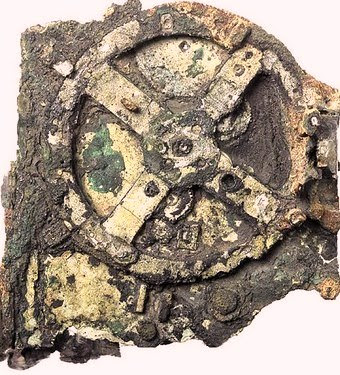Planetariums
A historical survey
Clocklike Gearing
Strictly speaking, a planetarium, as the name suggests, is a device that can be used to demonstrate the motions of the seven Greek “planetes” or “wanderers”, namely, the sun, moon and five naked-eye planets. A device of this kind involves the use of clocklike gearing, or at least, a system of pulleys, but it need not rely on some form of optical projection.
If we accept this definition it is a fairly easy matter to trace the development of the planetarium. We can, for example, include all models of solar system, consider astronomical clocks, and in fact, identify the origin of the planetarium with that of mechanical clock. The latter, as Derek Price and other historians have pointed out, grew out of the use of toothed wheels to transmit power, and not. As is commonly supposed, from sundials, sand-clocks and water-clocks.
 |
| Ancient Toronto Planetarium. |
Archimedes’ Planetarium
An early example of the use of gears to provide power transmission and at the same time give special ratios of angular movement, is the planetarium said to be constructed by Archimedes in the third century B.C. The device was described by Cicero and several later authors, but unfortunately the accounts contain no technical information. As far as we can tell it took the form of a hollow metal globe presumably of a lattice construction , with a small model earth at its center.
According to Cicero, who got his information from C. Sulpicius Gallus, “a very learned man”, the globe could be rotated, so that the seven wanderers went through “various and divergent movements with their different rates of speed.” Ovid described it as a “miniature representation of the vast vault of heaven”.
Astrolabes
The planetarium of Archimedes could have been similar to an armillary sphere or spherical astrolabe, an instrument introduced by ancient Greeks for determining the positions of the seven wanderers relative to the stars. At first it consisted of a few graduated, concentric, and intersecting rings which represented the horizon, meridian, celestial equator, and ecliptic, but after the fifteenth century it became more elaborate. One development was to add further reference circles and to fix a model earth in the middle. Another was to add moving models of the seven wanderers, so that the whole affair illustrated the earth-centered or Aristotelian conception of the universe. Yet another was to turn it into a flat of planispheric astrolabe, in which form it was widely used by the Muslims as an aid to navigation. Many of these flat astrolabes are now preserved in museums. They are beautifully constructed and often bear exquisite designs. The men who made them were not only technicians and craftsmen but also great artists.
Antikithera Machine. Fragments of the Antikythera Machine. An early form of planetarium instrument
Some astrolabes had a built-in system of gear wheels and served as elaborate astronomical computers. They may have an early representative in certain corroded pieces of bronze gear-wheels salvaged in 1901 from the wreck of an old ship found off the island of Antikythera, between Greece and Crete. The parts, believed to date from about 65 B.C., were accompanied by traces of what may have been a wooden case. They also carry partly legible inscriptions, and these, along with the partial reconstruction of the gears, indicate that the machine was in early form of astronomical computer.

No comments:
Post a Comment
You can leave you comment here. Thank you.